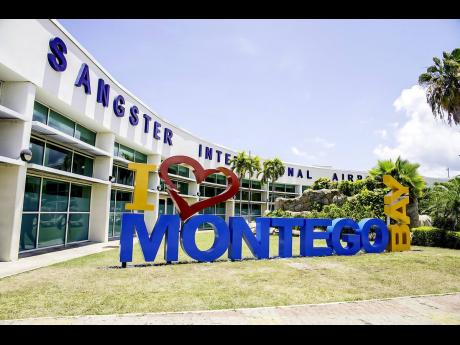The Airports Authority of Jamaica is projecting a recovery in passenger traffic for Jamaica’s two international airports even as capital improvement works proceed apace at the Sangster International Airport (SIA) in Montego Bay, St James.
President and Chief Executive Officer (CEO) of the Airports Authority of Jamaica (AAJ), Audley Deidrick, says the travel and tourism industries have, by far, suffered the most significant impact from the COVID-19 pandemic.
Despite the downturn in traffic and revenues, Deidrick says that the airport concessionaire is pressing ahead with many of the planned improvements under the master plan, which is required every five years in response to current and future growth forecast.
The projects, which represent an investment of approximately US$170 million, include expansion works under a master plan programme and a runway expansion project.
The AAJ CEO says this comes against projections for a sharp recovery in passenger traffic in 2021, with SIA projected to post three million passengers, and one million at Kingston’s NMIA, representing increases of 65 per cent and 55 per cent, respectively.
AAJ owns the island’s two international airports and provides oversight and contract administration for the concession agreements, which are in place for the operation of each facility.
Deidrick points to an Airports Council International (ACI) Advisory Bulletin published on December 8, 2020, which had projected that the global airport industry would record a reduction of more than six billion passengers by the end of 2020, compared to the pre-COVID-19 forecast for the year, representing a decline of 64.2 per cent of global passenger traffic.
Consequently, markets having significant domestic traffic are expected to recover in 2023 to pre-COVID-19 levels, while markets with a significant share of international traffic are unlikely to return to 2019 levels until 2024.
However, due to wider economic and other factors that drive Jamaica’s international passenger traffic, the recovery to pre-COVID levels is not expected until 2025-2026.
“So they had done a master plan, which calls for major expansion of the terminal, the car park, realignment of roadways on the air side, and access to the airport,” Deidrick says.
The master plan was approved in 2019 and was expected to begin in 2020, but activities were put on hold due to COVID-19.
Works under the programme, which amount to over US$100 million, are separate from the runway expansion project, which started in 2019, and are being undertaken at a cost of US$70 million.
That runway expansion, Deidrick says, is significantly advanced and is forecast for completion by the end of 2021 into the first quarter of 2022. As it relates to the master plan, he says that some elements of the programme have already started.
“They had gone ahead to construct 7,000 square metres of additional circulation space and retail concession space in the departures terminal. That work is significantly advanced and should be completed around August of this year,” he notes.
Deidrick adds that the management of the airport has also implemented a solar power system, which will provide significant power supply to the airport at a cost of US$1 million.
The installation is expected to be completed by August.
“So all these works are continuing. The only ones that are not continuing right now is the stretching of the terminal building to accommodate greater space internally in terms of immigration, Customs, and the transportation halls,” he adds.




